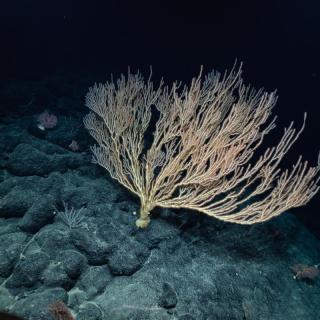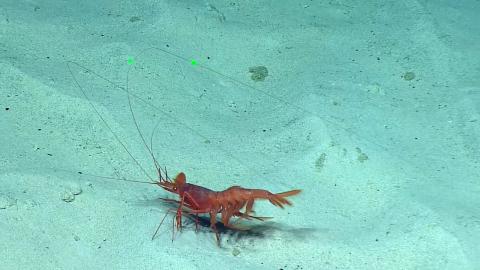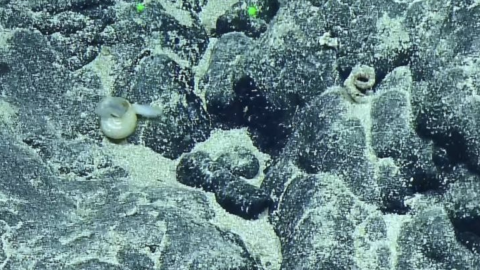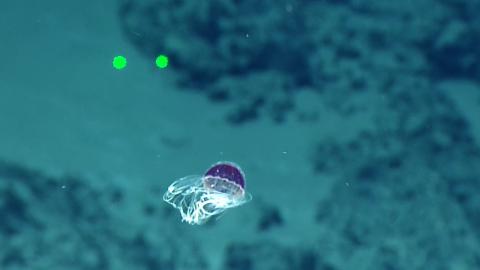Seeking Clues on Seamounts Viewing Volcanic Formations
During our NA153 expedition to explore ancient seamounts in and around the Pacific Remote Islands Marine National Monument, our Corps of Exploration have witnessed some impressive geological features searching for clues about their volcanic formation. Along the seamountsʻ slopes, the team has found channels of small rock fragments, lovingly called "nuggets" by the team in the control room. Looking closely at the layers as the ROVs fly, the team spotted a lava tube and reef “parfait” that may be an indicator of late-stage volcanism, a reminder that todayʻs seamounts formed over many different eruptions and millions of years. Using seafloor formations such as the long volcanic flow "rock wall" to piece together history are the best clues we has as explorers to learn about how these regions were formed.
“We explore the geology of regions like the Johnston Atoll for several reasons,” says Dr. Robert Pockalny, Co-Lead Scientist of the expedition. “At the most basic level, we want to characterize the range of geologic features in this largely unexplored region, including rocks’ morphology, geochemistry, and ages. This data will help us interpret the geologic, tectonic, and volcanic history of the region, which helps us understand the most fundamental processes on Earth.”

Deep Sea Biodiversity & Ancient Seamount Exploration near Johnston Atoll
In August 2023, we will return to the Central Pacific for 27 days of exploration within the Johnston Atoll Unit of the Pacific Remote Islands Marine National Monument (PRIMNM), starting and ending in Honolulu.



